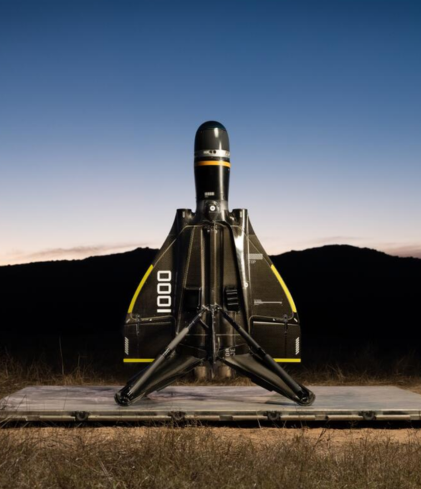There has been a relentless stream of news stories about big tech layoffs over recent years.
In October, Amazon confirmed that it is looking to cut around 14,000 of its corporate jobs. IBM confirmed in November that it is looking to trim “a low single-digit percentage” of its approximately 270,000 global workforce, implying at least 3,000 or so layoffs.
These companies typically attribute the layoffs to artificial intelligence (AI). Beth Galetti, Senior Vice President of People Experience and Technology at Amazon, said in her memo announcing the latest layoffs that “This generation of AI is the most transformative technology we’ve seen since the Internet, and it's enabling companies to innovate much faster than ever before (in existing market segments and altogether new ones).
“We’re convinced that we need to be organized more leanly, with fewer layers and more ownership, to move as quickly as possible for our customers and business.”
Consulting firm Accenture, meanwhile, is cutting 11,000 staff that it feels can’t be retrained for AI-heavy work.
There have been high-profile examples of individual companies making bold bets on completely overhauling their teams and putting AI front and centre of how they do business.
Klarna’s CEO Sebastian Siemiatkowski boasted to Bloomberg in December 2024 that he hadn’t hired any humans in a year and that the Buy Now, Pay Later company’s headcount had fallen by around 700 during that time.
In April 2025, edtech app Duolingo published a memo from its CEO Luis von Ahn claiming that the company was going to be ‘AI-first’. The changes included a bar on hiring new employees before exploring whether AI could do the work, and that employees’ use of AI would be factored into performance reviews.
Do AI layoffs work?
These were two of the most high-profile examples of companies explicitly talking about displacing work that would normally be performed by humans with AI. Within months, both companies had actively backtracked.
In May 2025 it emerged that Klarna had been scrambling to re-hire many of the 700 or so support agents that had left since its bid to go all-in on AI. The AI agents it had replaced its human staff with were seemingly not up to the task.
“Cost unfortunately seems to have been a too-predominant evaluation factor when organizing this,” Siemiatkowski admitted in another Bloomberg interview (less than five months after the one where he bragged about how many humans he’d replaced). “What you end up having is lower quality.”
Business Insider reported in September that Klarna was having to reassign engineers and marketers to customer support roles, having struggled to replace the human staff it had previously cut.
Von Ahn, after backlash against his AI-first memo, publicly walked back on it during an interview with The New York Times in August. He blamed himself for the memo being open to misinterpretation over the extent to which AI was replacing human labour at Duolingo.
“We’re hiring at the same speed as we were hiring before,” he insisted.
Is AI really behind the layoffs?
Vibe coding tools exploded in popularity through mid-2025, but reporting from Business Insider in September showed that their popularity was falling off a cliff.
There appears to be an increase in churn after 12 weeks using these tools: the implication is that, while they’re fine for throwing an MVP together, anything above this level and the complexity required for production-ready code is just beyond what AI coding tools are (presently) capable of.
That may never change: it takes teams of engineers working in collaboration with product owners and various other stakeholders to bring functioning software together, so however great the AI tool, why should a single prompt ever be able to do the trick?
Then there is the question of whether AI is actually the underlying cause of job cuts. As much as the big hyperscalers and tech scaleups like to claim that AI is the cause of their layoffs, there is some evidence to suggest they’re two separate phenomena.
U.S. Bureau of Labor Statistics, Job Openings: Total Nonfarm [JTSJOL], retrieved from FRED, Federal Reserve Bank of St. Louis; https://fred.stlouisfed.org/series/JTSJOL, November 16, 2025.
While the AI age can be said to have begun in November 2022, when ChatGPT was first launched to the public, total job openings in the US actually peaked months before, in March 2022. Job openings have fallen since then – unsurprising, given that the global economy was rocked by Putin’s invasion of Ukraine in February of that year.
For all that tech layoffs dominate the headlines when they happen, through the second half of 2024 and 2025, the pace at which US jobs have been declining has slowed. The pattern is similar in the UK; job openings peaked in March 2022 and have been falling since, though the pace of the decline seems to have slowed from Q2 2025.
Peter Cappelli, a professor of management at the Wharton School and director of its Center for Human Resources, told CNBC “We spend a lot of time looking carefully at companies that are actually trying to implement AI, and there’s very little evidence that it cuts jobs anywhere near like the level that we’re talking about.
“In most cases, it doesn’t cut headcount at all,” he continued. “Using AI and introducing it to save jobs turns out to be an enormously complicated and time-consuming exercise.”
There's still a place for natural intelligence
All of this, as well as the experience of Klarna and Duolingo, underscores the fact that while agentic AI is radical technology, it is still very early days, and even once it has progressed further it is unlikely that it will completely displace human work.
Legendary AI engineer Andrew Ng posted on LinkedIn in November about an email he received from an 18-year-old who was preparing for university but was concerned that AI would mean that, by the time he graduated, it would be too late for his work to have any meaningful impact. Here’s a couple of paragraphs from the post:
I wrote back to reassure him that there will still be plenty of work he can do for decades hence, and encouraged him to work hard and learn to build with AI. But this conversation struck me as an example of how harmful hype about AI is.
Yes, AI is amazingly intelligent, and I’m thrilled to be using it every day to build things I couldn’t have built a year ago. At the same time, AI is still incredibly dumb, and I would not trust a frontier LLM by itself to prioritize my calendar, carry out resumé screening, or choose what to order for lunch — tasks that businesses routinely ask junior personnel to do.
It’s easy to get caught up in the hype and the negativity around AI, especially at a time when the global economy is under strain anyway.
But the truth is probably that, while AI is undoubtedly reshaping how people work and how companies structure their workforces, the impact isn’t quite as radical as we’re often led to believe and there are other forces at work around the current state of the job market.




